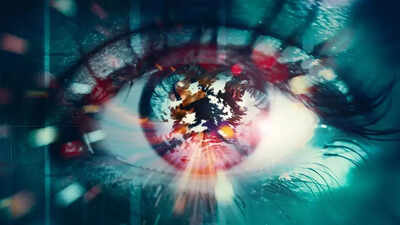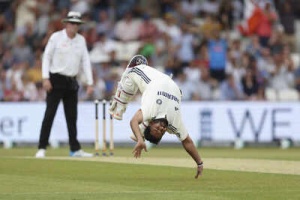Have you ever paused to truly consider your perception of the present? A groundbreaking study from 2022, published in Science Advances, indicates that our perception of the present moment might be an illusion. Researchers suggest that our brains could be presenting us with a visual representation that is up to 15 seconds old. This fascinating phenomenon suggests that our brains are constantly blending past visual information to create a stable and seemingly seamless view of the world around us.

The human brain does not process the visual world in real-time. Instead, it introduces a delay and merges images from the recent past to construct a steady and fluid perception of our surroundings. Scientists have termed this effect a "previously unknown visual illusion", which shields us from the potentially overwhelming nature of moment-to-moment perception.
This delay is not a flaw but rather a crucial survival mechanism, enabling us to manage the continuous influx of sensory information in a dynamic environment. Consider the rapid changes occurring around you – flickering lights, shifting shadows, moving objects, or even the quick movements of your own eyes. Processing each and every one of these changes instantaneously would likely overwhelm your brain.
To prevent this sensory overload, your brain employs a process known as serial dependence. This process involves blending what you are currently seeing with what you saw just moments before. The result is visual smoothing, which provides you with the perception of a calm and unchanging scene. In essence, your brain prioritizes peace of mind over absolute precision.
The study revealed that our brains might rely on visual snapshots from up to 15 seconds in the past. This means that what we perceive as the "present moment" is, in fact, an edited replay of previous visual input.
This delay serves as a crucial function, allowing us to function effectively in an ever-changing environment by preventing cognitive fatigue. It acts as a form of biological buffering, where the brain continuously edits a video, replaying the last few seconds to ensure continuity. Instead of being a mere glitch, this feature presents a significant evolutionary advantage. By prioritizing consistency over hyper-accurate real-time feedback, the brain enables us to:
In our rapidly evolving world, this smoothing effect ensures that our attention is not diverted by every minor alteration in our surroundings.
This discovery raises critical questions about our understanding of mindfulness and philosophy – particularly the concept of being fully present. If our visual reality is rooted in the past, then the "now" we believe we inhabit is not truly present. Rather, it's a carefully curated experience shaped by our brain's memory and educated guesses.
This prompts us to consider:
You are, in effect, seeing the past, and your brain is working hard to keep you unaware of it.
Newer articles
Older articles
 Android Security Alert: Government Warns of Critical Flaws Exposing User Data
Android Security Alert: Government Warns of Critical Flaws Exposing User Data
 Bezos-Backed Methane-Tracking Satellite Mission Ends Prematurely After Loss of Contact
Bezos-Backed Methane-Tracking Satellite Mission Ends Prematurely After Loss of Contact
 Greg Chappell: Rishabh Pant is Revolutionizing Cricket with Unorthodox Batting
Greg Chappell: Rishabh Pant is Revolutionizing Cricket with Unorthodox Batting
 Sanjog Gupta Named ICC's New Chief Executive Officer, Set to Lead Cricket's Global Expansion
Sanjog Gupta Named ICC's New Chief Executive Officer, Set to Lead Cricket's Global Expansion
 Heart Attack Warning: 5 Subtle Signs to Watch for a Month Prior
Heart Attack Warning: 5 Subtle Signs to Watch for a Month Prior
 Gavaskar Calls for Kuldeep Yadav's Inclusion in Second Test Amid Bumrah Fitness Concerns, Eyes Batting Reshuffle
Gavaskar Calls for Kuldeep Yadav's Inclusion in Second Test Amid Bumrah Fitness Concerns, Eyes Batting Reshuffle
 Staying Hydrated May Significantly Lower Risk of Heart Failure, New Study Finds
Staying Hydrated May Significantly Lower Risk of Heart Failure, New Study Finds
 Asia Cup 2025: ACC Eyes September Start Date Amid Growing Optimism
Asia Cup 2025: ACC Eyes September Start Date Amid Growing Optimism
 Doctor Reacts to Rishabh Pant's Somersault After Century: 'Unnecessary!' – Surgeon Who Aided Recovery Speaks Out
Doctor Reacts to Rishabh Pant's Somersault After Century: 'Unnecessary!' – Surgeon Who Aided Recovery Speaks Out
 FIFA Club World Cup 2025: Upsets, Messi Magic, and Weather Woes Define Group Stage
FIFA Club World Cup 2025: Upsets, Messi Magic, and Weather Woes Define Group Stage